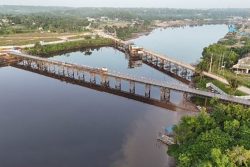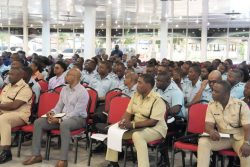Dear Editor,
There was a letter published in the Stabroek News of 7/19/24 by GuySuCo, regarding the state of affairs of its aircraft. The original letter was penned by one Carl Persaud, which I must admit, I missed. I, however, saw enough from GuySuCo’s response to agree entirely with what Carl had said.
Editor, early in 2022, I as chairman of GuySuCo’s operations committee, noting the massive amounts of money being spent to maintain the airstrips at the estates and the Ogle operations, submitted a proposal to the Board to do away with the aircraft altogether, rent the hangar out, and pursue the acquisition and deployment of drones, specifically the Industrial ARGAS T20 drones, to the Estates. I recommended the purchase of 6 drones, 3 for Albion, two for Blairmount and one for Uitvlugt.
To the best of my recollection, even back then, there were serious charges of corruption at the aircraft department, and frankly, I saw it as costing far too much for a GuySuCo which was being downsized. The maintenance of the airstrips alone on each estate was horrendously expensive. Speaking from memory I believe that in 2022 the budgeted cost of aircraft and ancillary operations was upward of $160 million.
Editor, my recommendation was supported by trials done in the South African sugar industry where drones were applying weed killers and specifically ripeners at far more cost-effective rates and with better results than even the helicopters which sprayed huge amounts of water to large acreages and are very costly to operate. Editor, bounded by our rainfall and other challenges means spraying larger acreages to make the aircraft operations more economical with longer runs, hence some chemicals may be applied too late according to specific application criteria. Remember always that GuySuCo uses a far more primitive application machine, an airplane travelling at 70 to 80 MPH and not the far more expensive but more efficient crop-dusting helicopter.
The South Africa trials proved that cane ripeners sprayed by drones were more effective and cheaper according to the results they were obtaining from even helicopters, much less crop-dusting airplanes. Also Editor, drones spray much less, actually 15% less due to the slower and more precise application of the ultra-low volume spray applied to less than 4-6 ft above the cane canopy. Some of these chemicals are very expensive so 15% less is a very substantial saving per hectare. The drones can also fly around the fields, individually, in a much more precise way to apply the chemicals than the big Thrush Commander aircraft GuySuCo uses, spraying across as many as 20 fields at a time, but between the fields are the cross canals used to transport canes into which another 10% approximately of the chemicals gets lost – a total reduction of 25% less per hectare.
Also, over time, the government through its EPA had rightly declared all areas adjoining villages as no fly zones to protect the villagers from the drift of harmful products, but with drones there would be no reason to apply this rule.
The total cost of purchasing the 6 drones was US$90,000 at $190G to $1US (GuySuCo’s conversion rate then) or G$17 million, one tenth of what they were estimating in 2022 to maintain their aircrafts and airstrips.
On the face of it, this hardly seems much better, but it was the cost of applying it to obtain 14% better sugar recovery, which to me was the most important factor. I estimated the cost of application by drones to be one tenth of the cost by aircraft. Those drones also can actually map out the estate’s cultivation, and fitted with the correct cameras/filters, it can serve as a great crop observation tool. For example, when the right lenses/filters are used, it can indicate where in the fields canes are not growing well, and in addition, incredibly, give an idea of how many tonnes of cane per acre is in the field. These things can also be used for applying chemicals for weed control and even fertilizer. I’m not even going to elaborate on their use for security etc., in an industry as expansive as the GuySuCo cane cultivations.
Editor, there has always been some apprehension of using the black water with soil and other organic matter suspended/dissolved in it, as the carrier for the expensive weed control and insect chemicals, and frankly, even today there is serious attention being given worldwide, about the quality of the water used to apply certain agro-chemicals. The water aircraft and workers use to spray currently is conservancy water pumped from the nearest trench that contains a lot of impurities. Also our black conservancy water is very acidic and this has been a cause for concern. But the water used by drones, due to the ultra-low volumes being applied, can be carried in tanks into the cultivation from the factory, so artesian water can be used, thereby making sure that the chemicals being applied are at maximum effectiveness without the monstrously high cost of maintaining aircraft and airstrips.
For whatever reason the GuySuCo top management wanted to continue with their hopeless attachment to the past, and even though the Board accepted and recommended that the drones be advertised for bids it was never done. So Editor, the old adage seems to have much merit, “where ignorance is bliss, it’s folly to be wise”.
Sincerely,
Tony Vieira








